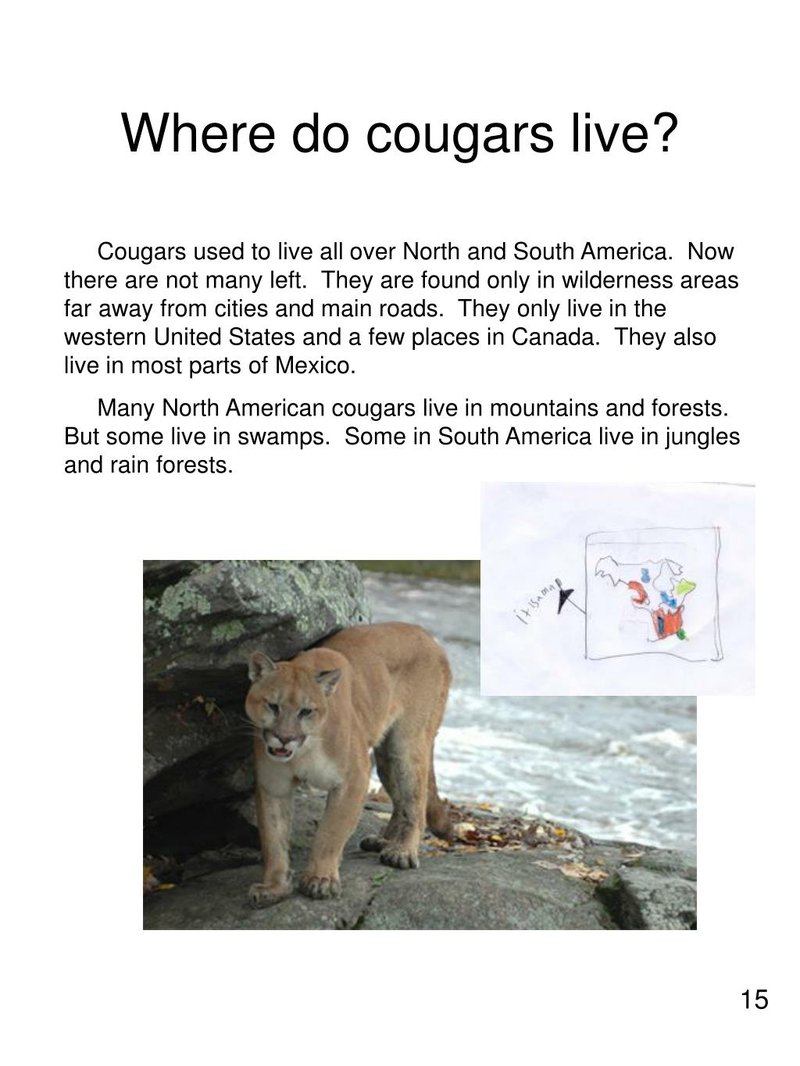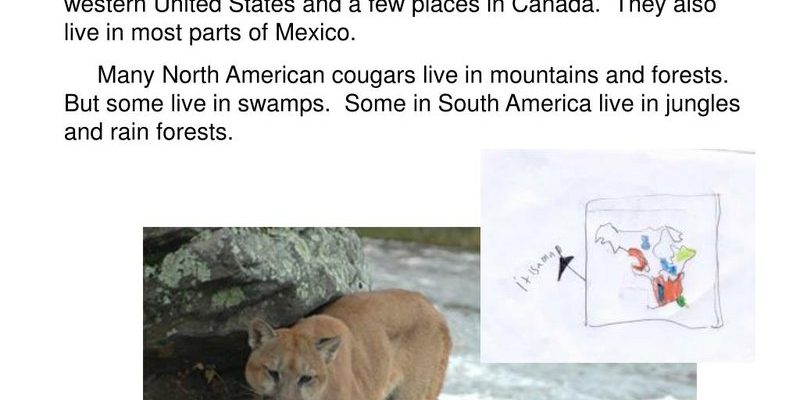
To really understand where cougars live, it helps to break down their habitats and the various factors that influence their distribution. There’s more to their story than meets the eye, and you’ll find that their homes are as varied as the landscapes of North America itself. Let’s dive into this and explore the different types of habitats these incredible cats prefer.
Understanding Cougar Habitats
Cougars are known to occupy a wide range of habitats. They thrive in forests, mountains, deserts, and even suburban areas. Here’s the thing: while they prefer places where they can hunt and hide, they’re also incredibly adaptable. This flexibility allows them to survive in areas that might seem inhospitable at first glance.
Forest Habitats
In dense forests, cougars find plenty of cover and prey. The thick underbrush gives them ideal concealment for stalking deer, their primary food source. Forests provide a complex structure with various levels, allowing cougars to move stealthily. They often prefer mixed coniferous or deciduous forests, as these areas offer abundant prey and optimal hiding spots.
Mountain Environments
High-altitude areas are another favorite for cougars. Here, they’re right at home among rocky terrains and steep cliffs. These environments not only provide great vantage points for spotting prey, but they also offer security. Cougars can scale steep slopes to escape from threats. Mountainous terrains also tend to have lower human populations, which is a plus for these elusive cats.
Desert Landscapes
Despite the harsh conditions, cougars can also live in desert regions. Think of the arid lands of the Southwest, where rain is scarce, and temperatures can soar. Here, cougars adapt by becoming more nocturnal. They hunt in the cooler evening hours, seeking out animals like rabbits or deer that are also more active at night. The ability to thrive in such extreme conditions showcases their adaptability.
Suburban Areas
Surprisingly, you might find cougars even in suburban neighborhoods. As urban development encroaches into their territories, these big cats are forced to adapt. Suburban areas can offer food sources, like deer and small pets, and some cover from buildings and trees. However, this notable shift can lead to conflicts with humans, as encounters become more common.
Geographic Distribution of Cougars
When exploring where cougars live, it’s crucial to look at their geographical distribution. You might be wondering just how far they range. Cougars are primarily found throughout North and South America, from Canada down to the southern tip of Chile and Argentina.
North America
In North America, cougars once roamed across the entire continent. However, hunting and habitat loss caused significant declines in their populations. Today, they are primarily found in the western United States, Canada, and parts of Florida. Populations have been making a comeback in areas where protections have been enacted, showing that conservation efforts can be successful.
Central and South America
Moving south, cougars’ range extends into parts of Central America. They thrive in various ecosystems, including tropical rainforests, savannas, and grasslands. For example, in countries like Costa Rica, you might find them in dense rainforests, while in Argentina, they can be seen in open plains. Overall, their adaptability allows them to successfully inhabit different environments.
Factors Influencing Cougar Distribution
While cougars are often adaptable, several factors can influence where they choose to live. Understanding these factors can give us insight into their behaviors and how we might better coexist with them.
Prey Availability
One of the most significant factors influencing cougar distribution is the availability of prey. Cougars are carnivorous hunters whose primary diet consists of deer, elk, and smaller mammals. The presence of these animals dictates whether cougars will reside in certain areas. Regions with healthy populations of prey are more likely to support cougar populations.
Human Encroachment
As urban areas expand into cougar territories, their habitats are increasingly fractured. Cougars may find themselves pushed into smaller, isolated areas. This human encroachment affects their movement patterns and hunting opportunities. Understanding this impact is critical for conservation efforts.
Climate and Seasonal Changes
Climate also plays a role in where cougars live. Seasonal changes can alter their habitats, as snow in winter can limit their access to prey. Some cougars migrate to lower elevations during particularly harsh winters. Adaptation to these seasonal changes is essential for their survival, showcasing their resilience and intelligence.
Conservation Status and Habitat Protection
With their vast range, it’s essential to consider the conservation status of cougars. Many states have implemented protections to ensure these magnificent animals can thrive. Conservation efforts focus on preserving their habitats and increasing prey populations, which benefits not only cougars but the entire ecosystem.
Protected Areas
In several regions, protected areas and national parks play a vital role in providing safe habitats for cougars. These areas allow for hunting, breeding, and natural behaviors without the interference of human activity. By maintaining and expanding these protected habitats, we can support healthier cougar populations.
Public Awareness
Raising public awareness about cougars is crucial for their conservation. Educating communities about living with cougars can reduce conflicts and encourage coexistence. Understanding their behavior, habits, and ecological importance can foster appreciation for these wild cats, leading to better protection efforts.
The Future of Cougar Populations
As we look to the future, the survival of cougars depends on our actions today. Protecting their habitats and understanding their needs will be necessary for their continued existence.
Role of Technology
Innovative technologies, like GPS tracking, help researchers monitor cougar movements and behavior. This data is invaluable for understanding their habits and making informed decisions about habitat protection. These efforts are crucial for ensuring that cougars can thrive in an ever-changing world.
Community Involvement
Communities can play a significant role in supporting cougar populations. Engaging in local conservation efforts, educating neighbors about cougars, and advocating for habitat preservation can all contribute to the well-being of these majestic cats.
As we gain a deeper understanding of where cougars live and the challenges they face, it becomes evident that they are not just a part of the wild—they are a vital piece of our natural landscape.
In summary, cougars are fascinating creatures with a broad range of habitats across the Americas. From dense forests and rocky mountains to deserts and suburban developments, these adaptable cats thrive due to their intelligence and resilience. As we learn about their habitats and work towards conservation, we can help ensure that cougars continue to roam our landscapes for generations to come.

